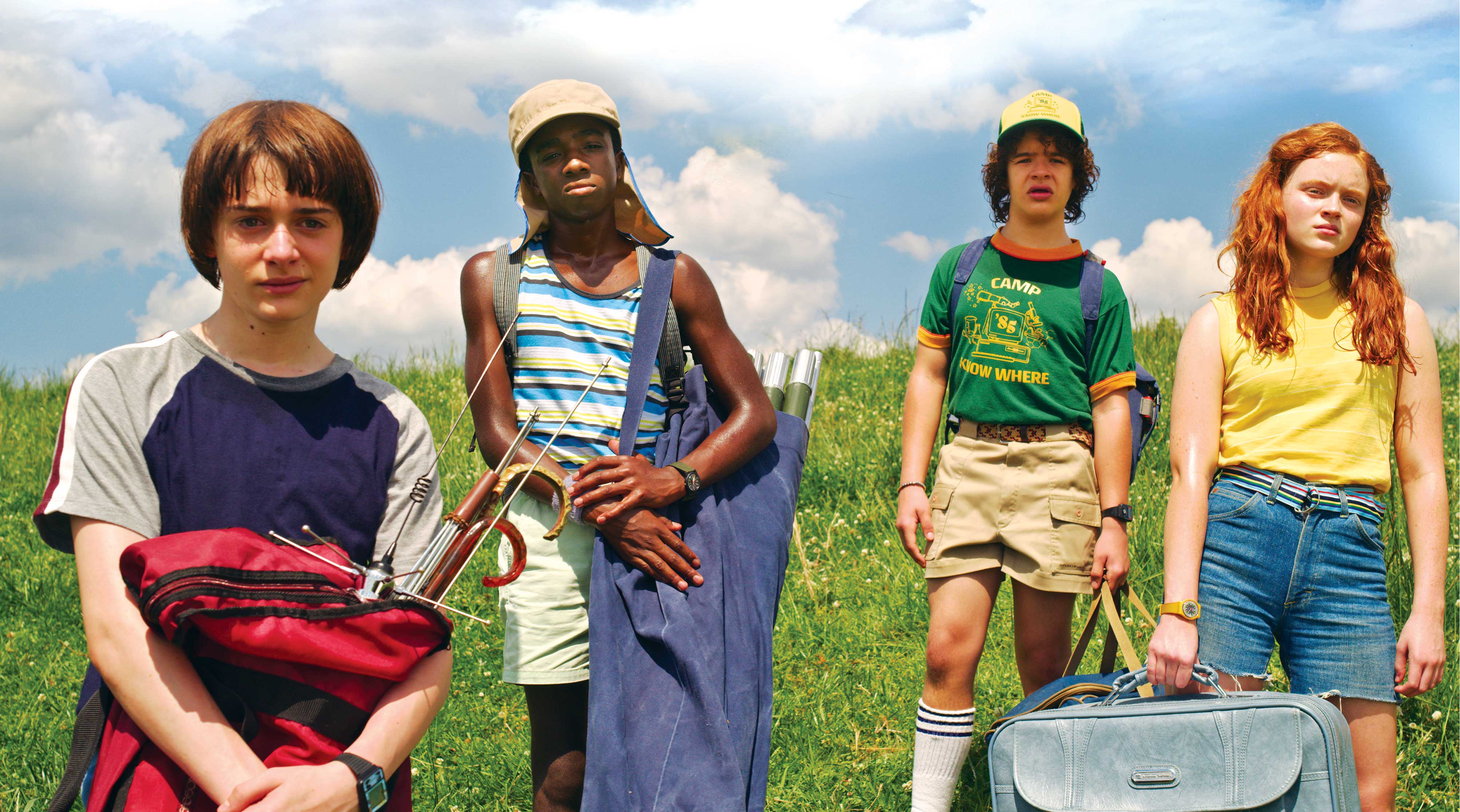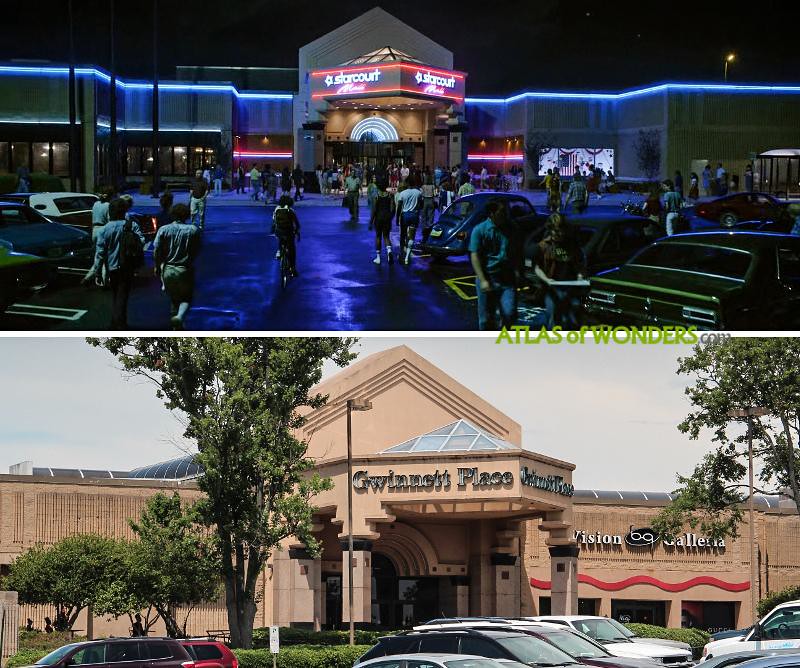Creating 1980s Hawkins, Indiana in 2019 Georgia

The success of Stranger Things, which returned with record-breaking viewership in July, is due to a number of factors, including the ever evolving narrative and artistic innovation that keeps the fans interested and begging for more. Most of the credit goes to the series’ visionary creators, Matt and Ross Duffer (aka the Duffer Brothers). But also deserving of recognition are the many crew members who’ve turned the Duffers’ vision into a reality by transforming modern day Georgia into 1980s Indiana.
This year’s third season was anything but more of the same for the hit Netflix series. As the story of kids battling monsters in small-town America continued into the summer of 1985, we saw changes that were realized through a combination of talents. The show reached a turning point in terms of its setting and its characters. To get there, Stranger Things required impeccable effort from every department involved in the production.
Oz Magazine talked to five department heads, those in charge of locations, extras casting, costume design, cinematography and production design of Stranger Things, to learn what goes into making one of the most popular and most iconic series of our time.
Locations Manager / TONY HOLLEY
Channeling the 1980s Hoosier State

Tony Holley is a Georgia native who has been scouting locations locally for years. He rose to become location manager, responsible for not only finding, but also securing and overseeing shooting locations throughout the production. At the end of Stranger Things season 3, he was promoted again to the position of supervising location manager, handling shooting locations in multiple cities and for multiple units.
OZ: For Stranger Things, you were tasked with two challenges: the 1980s and Indiana. Is the Midwest easy to translate in Georgia?
TH: Indiana was selected originally just to be a little on the generic side: Anywhere USA, geographically speaking. The middle of the country was selected somewhat strategically to make it so that anywhere we film, being in Georgia, it wouldn’t be that incongruous. There are some plants that are not native to Indiana, and someone who is very discerning might be able to pick up on that, but by and large the seasons are kind of the same, though we don’t have as much of a rough winter season as Indiana might.
What was the most difficult thing about getting the time period right?
When I have to find a location, the only thing that’s super challenging from the period perspective is if we’re going to end up in someone’s kitchen, or their bathroom. Otherwise the materials haven’t really changed. You still use brick and sheetrock and all that, and the types of houses, they’re the same. Obviously, the modernist aesthetic is a little bit different when there are a lot of concrete houses going up, but I’m never going to look at those houses for Stranger Things.
Things that only exist or definitely would have existed in the time period have to be thought of when you’re out scouting. You can’t go to a house and directly across the street there’s a McMansion or a new modern build or whatever. That’s constantly part of the bible of scouting for the show. At least the 270-degree surrounding the location, if not the 360, has to have existed in the ‘80s.
The type of town setting we’re working in kind of helps me, because it’s a fairly small town and the things I have to bring the production from a location perspective aren’t impossible. It’s not impossible to find a brick and mortar retail store or a house that has largely not been updated. They still exist, I guess. We established most of the houses in season 1. The standing sets that we see every season, those are actual sets. The only time we go to the Wheeler house, it’s the outside of the house. Sometimes we’ll go inside doorways, but the interiors are on a sound stage.
Do you typically use a sound stage for interiors?
From a period, perspective, yes. For an episodic series, your standing sets will be built; the things you’re going to return to over and over again. It gives you a place that’s not impacted by weather, and it doesn’t matter if it’s day or night. That’s what the stage set becomes, a safe place. We’ve done a few houses outside of season 1 that have been practical, but by and large, we don’t go into the rooms where it is going to be difficult. Or, if we do, that’s when I have to find something that’s period appropriate throughout, and then it gets more challenging. Barb’s house in season 2, the interior was an example of that. Season 3 definitely did not live in small spaces. Everything in the world was so much bigger in season 3.
“The middle of the country was selected somewhat strategically
to make it so that anywhere we film, being in Georgia,
it wouldn’t be that incongruous.”
Were you asked by the Duffers to find anything specific looking as far as being totally ‘80s?
They wrote to the period in which the show existed. That’s why we had an arcade, and that’s why we had a mall as a bigger location in season 3.
What about anything that looked like something specific from ‘80s pop culture?
There’s no request to find the Amityville House or the house from The Goonies or anything like that. There’s nothing that’s that much of a call out.
In season 3, the show moves in a new direction and that’s reflected in the progression of the time period and how locations in the town represent that. How did you help in getting that across?
The way that dichotomy of the old way and the new way was portrayed was this: we took downtown Hawkins, which we actually kind of expanded upon a little bit in season 3 by bringing in the newspaper office location, and we tried to make it look as if it wasn’t doing as well. You’ll notice in season 3 that half of downtown is vacant or going out of business because of the impact the mall is having on it. We aged downtown a little bit…the storefronts…because they’re not getting as much business. We closed a few stores to make them look like they were going out of business as well.
The flip of that is the mall itself. It was made to look brand new because it’s the new kid in town. The mall is very bright, very inviting and very warm, the way it was constructed and decorated and lit and everything else. There was definitely a play between the change in consumerism that began with the introduction of the mall to American life.
Did you also shoot less in Jackson, Georgia . . . aka “downtown Hawkins” . . . because it’s outside the 30-mile zone and therefore more expensive?
Yes. The fact that Jackson’s outside the zone does make us schedule and visit it less in a broad sense. Usually we’re going to shoot two episodes at a time. First and second episode together, third and fourth, fifth and sixth, and so on. We did not do that in Jackson because of the fact that it’s outside the zone. We basically clumped all the Jackson work into two different visits to get it done. What brings us into Jackson, or what used to at least, was primarily the store where Joyce worked. Now that Melvald’s [General Store] isn’t doing as well, she just didn’t stay in that space as much in terms of the story. The other part of downtown that we established this season, the Hawkins Post, was not actually in Jackson. It was in a town inside the zone. So, we could go there as it was scripted in our block structure.
Has it been difficult to secure locations, such as character homes, over the years? At least one spot, the quarry, is no longer available, right?
We’re definitely more forward-thinking now. Thinking about what kind of impact it’s going to have on us if we want to do [a certain location] in a follow up season. If the Duffers said we want to go back to the quarry, we could, but it would just be a different rock quarry because that one no longer exists. Or it would look vastly different than it looked in season 1. We eye toward the future with most of our location work now because I build future options into every location we contract, for the most part.

What was your process for finding Starcourt Mall?
Not that much different from any other location. This one was just so big in scope that it’s more challenging because of how large it is. It’s the location for season 3 I spent the most time on trying to find. I made it fairly clear to everyone that we were not going to find a completely closed mall because the metro area presently doesn’t have one. We’d be relegated or stuck with the underutilized or slowly dying mall, of which there really aren’t many of those around either. The mall, surprisingly enough, has experienced a bit of a resurgence in the last few years. Most of the regional malls are being populated and housed by more local chain stores as opposed to big national brand stores. There really weren’t that many wonderful options. We had a few to choose from of varying degrees of underutilization or availability. The one that we chose to work with had the emptiest space in it. Roughly 25 percent of an entire quadrant of the mall, with the exception of the anchor store, was completely empty.



